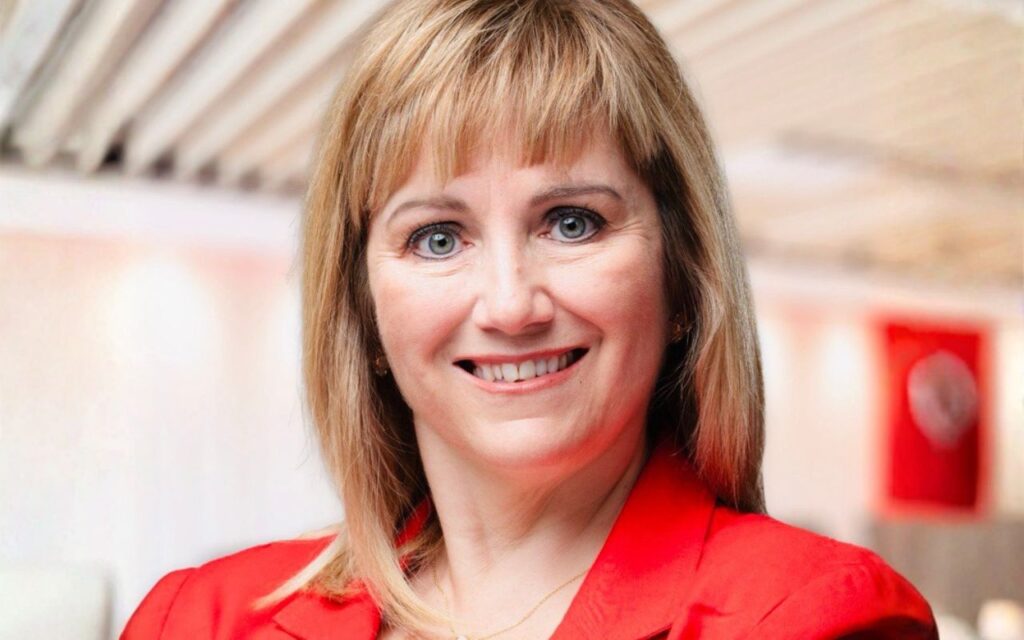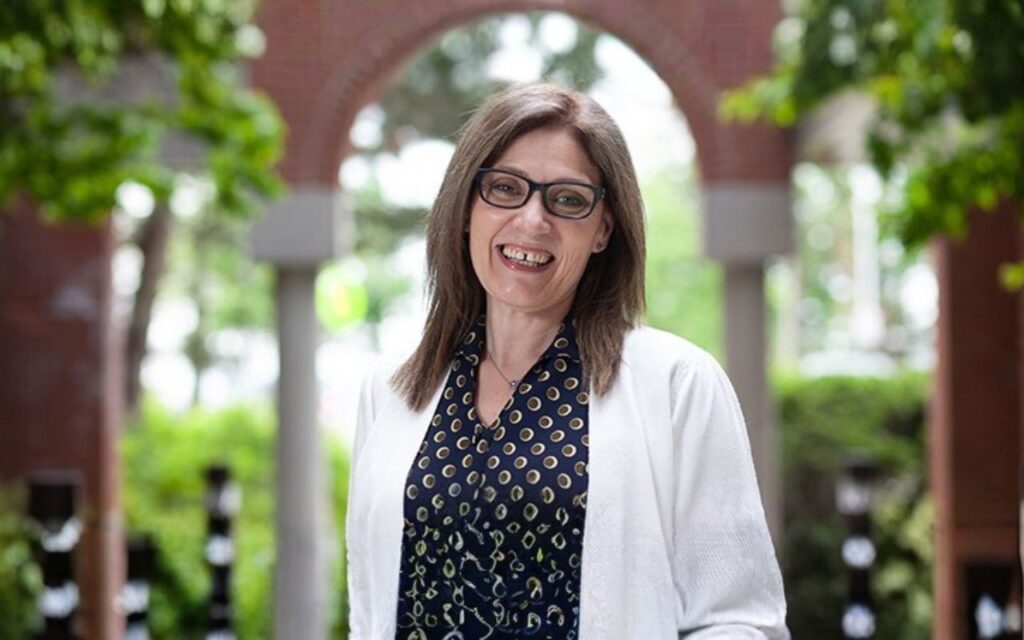
Insights from Dr. Heather Morrison, Chief Public Health Office for P.E.I.
Healthcare is a hot topic in Canada these days. It’s been front and centre in all four provincial elections held in 2023.
When you, or someone you love, experiences the healthcare system firsthand, it’s easy (and normal!) to judge it based on that immediate experience. Your needs were met, or they weren’t. You were seen quickly, or you’re still on a waiting list.
Here at The Honest Talk, we wanted to take a step back and pan out on our healthcare system. How can we truly assess it? What is it supposed to do for us? How should we expect it to serve us?
And, because we’re no experts (and because we’ve also been guilty of forming opinions of healthcare while fretting with our child in the ER, or waiting at the doctor’s office with an aging parent), we decided to talk to a true expert.
Dr. Heather Morrison is Prince Edward Island’s Chief Public Health Officer. Her role includes monitoring and improving the overall health of P.E.I. residents, as well as providing direction, recommendations, and information to both the public and the government during public health crises (yes, like during the COVID-19 pandemic).
We were delighted to have the chance to talk to Dr. Morrison and ask her our first question.
How are healthcare decisions made in Canada, for us as Canadians?
First, Dr. Morrison points out something that’s obvious but can be easy to lose sight of when dealing with a personal health crisis: while healthcare decisions undeniably impact individuals, the priorities are set much more widely.
Overall the decisions are made for the greater public good and what will benefit the most people.
Dr. Morrison
Examples include which drugs are covered by the health system, immunization programs, and medical screening.
Dr. Morrison explains that for the overall population, the guidelines will pick up and prevent more disease than without them. So, where somebody might never seek out any screening on their own, the guidelines may prompt them to have a test.
But what about people seeking more extensive drug coverage or more frequent screening than others?
“There will be some individuals inside certain groups — like a certain marginalized population — which might not have the same benefits from that group decision,” Dr. Morrison says. “We may need to look at it differently and see where there may be some gaps.”
She calls that flexibility “the art of medicine” — where patients should be able to talk to their healthcare provider about why the general recommendation exists and make an informed decision.
An ounce of prevention
Flexibility is something Dr. Morrison would like to see more of in another aspect of our system. “Most of the decisions in this country — from my perspective, 95 per cent of them — are focused on the healthcare system and very few are focused on prevention,” she says. “That’s the part I think about quite a bit: in the midst of acute care and access issues, how do we make sure the conversation and the decisions we make can also focus on public health and prevention?”
Dr. Morrison points out that 70 per cent of major, chronic diseases — diabetes, heart disease, cancer, and COPD (chronic obstructive pulmonary disease) — are influenced by four modifiable risk factors: tobacco use, physical inactivity, unhealthy diet, and the harmful use of alcohol.
70% of major, chronic diseases are influenced by 4 modifiable risk factors: tobacco use, physical inactivity, unhealthy diet, and the harmful use of alcohol.
Dr. Morrison
Healthcare isn’t always about healthcare
Those risk factors Dr. Morrison mentioned? Well, they may impact our health, but they’re not necessarily medical and, in fact, many involve legislation, policies, and practice outside the healthcare system.
Alcohol is a great example of something that isn’t controlled by the healthcare system yet has immense costs for both the overall system and for individuals.
It’s also something the wider community can decide to tackle: Dr. Morrison cites the Icelandic model. “Iceland takes a long-term community approach to reducing substance use with youth. Because of community-based interventions, over 10 to 12 years, they’ve seen a huge decrease in youth using substances.”
Is it easy? No. But Dr Morrison believes it’s worth the effort.
If we can focus on public health and prevention, it will help the healthcare system in the years ahead. And that will be important for us as individuals as we get older; it will be important for our children and the generations to come.
Dr. Morrison

Can technology save us?
Given all these challenges, is technology the answer to moving us toward an up-to-date healthcare system that better meets the needs of all Canadians? The answer, of course, is that healthcare is no different from the rest of our lives in that technology can be both a blessing and a curse.
The upside
“Never before in the world has there been such great access to information,” Dr. Morrison says. “My own children can look things up at the dinner table and let me know all sorts of things. We can see trends and have information that we can share in a digitalized fashion, giving us great insight and an ability to gather evidence.”
She also welcomes the ability to review CT scans and x-rays virtually, as well as getting virtual access to specialists who would otherwise require long waits — and possibly travel — to see.
The downside
However — you knew it was coming, right? — it’s not all good news. Misinformation is rampant when it comes to any healthcare-related topic.
Overall, Dr. Morrison is optimistic: “I think, for the most part, technology and data are changing the way we make decisions in a good way, because we can get evidence more quickly, but we also have some negative challenges.”
Moving forward, making progress
So how can you, as an individual, best understand and function within our current healthcare system?Here are a few tips:
- Seek out sound information from trusted resources. These may include hospitals, universities, associations, and government agencies. One search tip is to choose a source you trust (for example, Health Canada) then conduct an x-ray search (e.g. “site: www.hc-sc.gc.ca/ diabetes”) which will give you information about diabetes from that site.
- Turn to your local public health agency for information and programs on topics like health promotion, immunization, and smoking cessation.
- Explore complementary resources. Dr. Morrison gives Access PEI locations as an example. Traditionally this is where you would go for services like renewing your driver’s license, but the centres are now helping people sign on to virtual healthcare. “Someone like my mother wouldn’t know how to access that,” Dr. Morrison says, “so having those resources available can better direct them to that information.”
As for driving change, that can take effort and time, but it is possible. Dr. Morrison gives the example of countries, like New Zealand, that are starting to introduce a smoke-free generation. “It’s a positive example of how they were able to influence thinking and influence policy, and introduce legislation to make that happen,” she says. “It’s something to think about for our children – if they never started smoking, what that could do for our whole province. As we go forward, that’s a positive example we might be able to learn from.”
There’s a lot to juggle in our massive healthcare system: population-wide needs alongside the needs of individuals, and current issues as well as preventative measures. There’s no quick fix, but sometimes understanding why things are set up the way they are is the first important step to figuring out how to make the system work better for you … and maybe even to begin to influence change.








